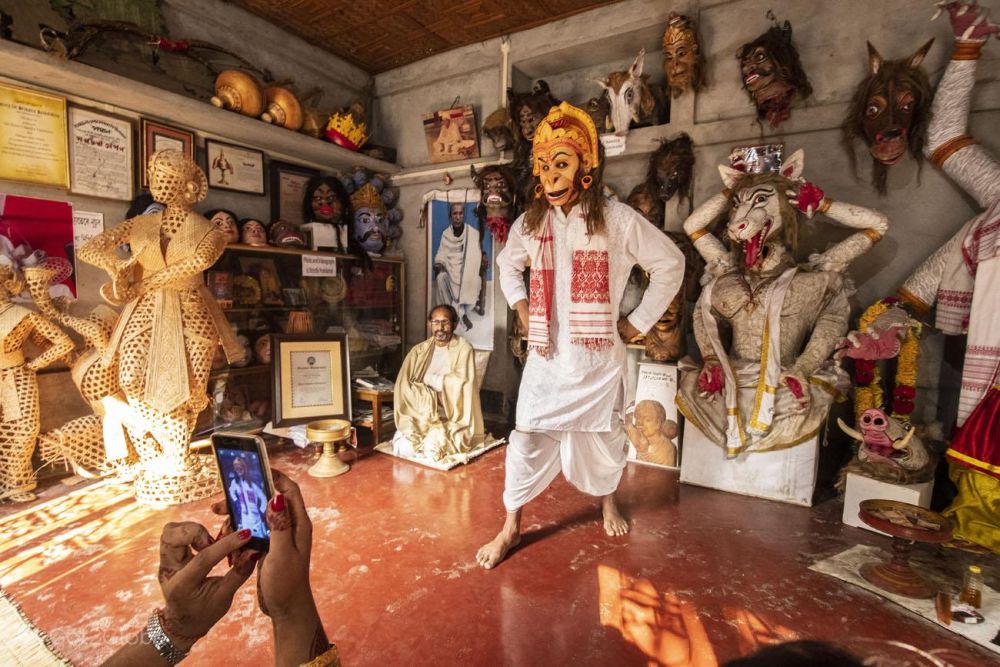

The picturesque island of Majuli, nestled in the Brahmaputra River in Assam, India, is famed for its vibrant culture and the ancient monastic institution known as Satra. Among these, the Samaguri Satra stands out as a cornerstone in the cultural and religious practices of the region. Founded by the saint and cultural icon, Srimanta Sankardeva, in the 15th century, the Satras have been instrumental in propagating the neo-Vaishnavite movement and preserving Assamese art and culture.
The history of tourism in Samaguri Satra began modestly as a destination primarily for spiritual seekers and scholars interested in the study of Assam's neo-Vaishnavite culture. However, it gradually evolved as more people started to recognize the importance of Majuli and its Satras as a treasure trove of living traditions, music, dance, and drama.
In recent decades, the recognition of Majuli as the world's largest river island (before it was split into two in 2016 due to erosion), and its mention in numerous travel accounts, further helped in spreading its fame internationally. The annual Raas Leela Festival at the Samaguri Satra especially plays a significant role in attracting visitors, as it showcases the unique blend of spiritual and artistic traditions of the region.
With increasing popularity, the state government and local bodies have taken initiatives to preserve the heritage and promote tourism. These cultural preservation efforts have added to the appeal of the Samaguri Satra, with more travelers seeking an authentic cultural experience.
Facilities for tourists have also been improved, with better connectivity to the island, and the introduction of eco-friendly accommodations that provide visitors with a comfortable stay without compromising the natural and cultural integrity of the place.
In recent years, eco-tourism and sustainable travel have been a growing trend in the tourism industry. Majuli, with its fragile ecosystem and unique traditional lifestyle, has naturally aligned with these trends. Visitors are increasingly looking for experiences that allow them to explore the natural beauty of the island, learn about its culture, and interact with the locals in a responsible way.
Another emerging trend is the interest in cultural tourism, where travelers actively seek to understand and engage with the cultural heritage of the places they visit. This has worked in favor of the Samaguri Satra, as tourists come not just to see the remarkable rituals and performances, but also to gain deeper insight into the philosophy behind them.
In light of the COVID-19 pandemic, there has been a shift towards more secluded travel destinations, with tourists choosing less crowded and open-air environments. Majuli perfectly fits this preference with its expansive, serene landscapes and an atmosphere that is far removed from the hustle and bustle of urban life.
Looking ahead, the Samaguri Satra is set to remain a central part of Majuli's tourism offering, as it is not just a place of worship, but also a living museum offering a window into Assam's soul-stirring cultural past and present.